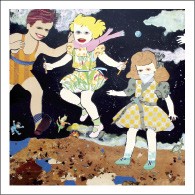At least as far as Tennessee’s two Republican senators are concerned, all those stories about John McCain‘s short fuse are on target.
Asked back in the winter whether he’d ever been on the receiving end of an outburst from the presumptive Republican presidential nominee, Senator Lamar Alexander told the Flyer, “Yes, I have,” adding after a pause, “There are very few of us [senators] who haven’t.” Alexander’s junior colleague Bob Corker, who was elected in 2006 after a tight battle with former Memphis congressman Harold Ford Jr., concurs.
After addressing a luncheon meeting of the Associated Builders and Contractors at the University Club on Monday, Corker was asked if he, too, had run afoul of the famous McCain temperament. “Yes. Very early on, I was a party to that,” Corker said. “It’s not an urban myth. It’s just a fact. But at the same time, John has been a true American hero, and he feels very strongly about the positions he holds, and when he disagrees with you, he lets you know.” The former Chattanooga mayor and businessman shrugged. “That’s just part of being in the Senate.”
Both Alexander and Corker, it should be said, are supportive of McCain’s presidential bid. On one key question — relations with Iran — Corker’s position seems to have evolved into something close to McCain’s hawkish views.
Yes, Corker still believes it’s important, as he stressed upon entering the Senate last year, to maintain communications with nations like Syria and Iran — both either actually or potentially in conflict with American policy goals in the Middle East. “We already are engaged with these countries at lower levels,” Corker said. He had a “but” clause, however, maintaining, “We ought not do it at the presidential level unless proper preparations have been made” toward moving the two nations closer to American aims. It was inappropriate to prematurely “raise the stature of governments that are acting poorly,” he said.
“We have to be careful about rattling sabers too much,” the senator acknowledged, but, in the case of Iran, he, like McCain, would keep the threat of military action on the table. “The most destabilizing thing in the world would be for Iran to acquire nuclear weapons,” Corker said. And he would not rule out a “preemptive” strike in that worst-case scenario.
But Corker also believes that, while the present government of Iran is “extremist,” the people of that country like Americans and “the best outcome is for the people of Iran to tire of the burdens and the sanctions currently placed on their government and to force a regime change. Meanwhile, leverage should be exerted through countries like Russia and China, “both of which have enormous influence with Iran.”
In his remarks at the University Club, Corker focused on domestic policy issues. The senator, who previously had opposed a cap-and-trade measure, said he might be open to a “rational” version of the legislation. In general, as Corker explained cap-and-trade, it would ration carbon dioxide discharges by industry, assigning “allowances” that had value as securities — a means whereby government coffers could be replenished simultaneous with positive environmental action.
On the question of global warming, he said, “I choose not to debate with scientists.”
In th long run, said Corker, America should move away from fossil fuels as a source of energy. Among other things, that meant a renascence of nuclear energy. In the short term, Corker strongly advocated off-shore drilling as a means to increase petroleum reserves.
The senator viewed with considerable alarm congressional spending practices and the fact of an ever-increasing national deficit — now at the level of $540 billion after “10 years” of negligence and inattention. He noted that he was one of “12 or 13 senators” who had voted against President Bush’s tax rebate stimulus plan: “It’ll cost us $66 billion, which we’ll never get back.” Meanwhile, he said, there was an $8 billion shortfall in federal highway construction.
On the issue of health care, Corker touted a formula of his own — the “Every American Insured Health Act” — for enlarging the number of Americans able to acquire private medical insurance and noted proudly, “McCain’s adopted it and is running on it.”
Early in his luncheon remarks, Corker had described himself as “one of the most nonpartisan people in the Senate,” pointing out that he had sought out legislative partnerships with Democrats.
This, of course, had been McCain’s own practice — historically, at least — though one that was arguably less evident during the Arizona senator’s battle for the 2008 Republican presidential nomination. Together with the various other positions taken on Monday by Corker — a growing hawkishness in foreign affairs, a measurable degree of environmental consciousness co-existent with a call for new energy sources, strict fiscal conservatism, and pride in taking maverick positions — it was a stance uncannily like that of the soon-to-be Republican presidential nominee.
With one important difference: There are no signs yet that the mild-mannered senator from Tennessee has acquired a volcanic temper à la McCain — a fact Corker’s colleagues no doubt appreciate.


